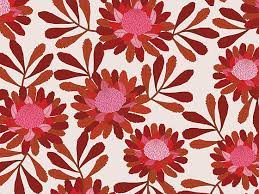
The Art of Design: Creating Beauty and Functionality
Design is a powerful tool that shapes the world around us. From the architecture of our buildings to the layout of our digital interfaces, design plays a crucial role in both aesthetics and functionality.
The Beauty of Design
Design is more than just making things look pretty. It is about creating harmony, balance, and visual appeal. A well-designed object can evoke emotions, tell stories, and communicate ideas without words. Whether it’s a piece of furniture, a logo, or a website, good design captures attention and leaves a lasting impression.
The Functionality of Design
While aesthetics are important, design also serves a functional purpose. A well-designed product not only looks good but also works seamlessly to fulfil its intended purpose. User experience (UX) design focuses on creating intuitive interfaces that enhance usability and make interactions with technology effortless.
The Role of Design in Innovation
Design thinking is at the heart of innovation. By approaching problems from a human-centric perspective, designers can come up with creative solutions that meet real needs. The iterative nature of the design process allows for experimentation and refinement until the optimal solution is achieved.
Conclusion
In essence, design is both an art and a science. It combines creativity with practicality to create solutions that are not only visually appealing but also highly functional. Whether it’s creating products, spaces, or experiences, design shapes our world in profound ways.
Seven Key Advantages of Design: From Enhancing Visual Appeal to Driving Innovation
- Enhances visual appeal
- Communicates ideas effectively
- Improves user experience
- Creates brand identity
- Solves complex problems creatively
- Generates emotional connections
- Drives innovation and creativity
Challenges of Design: Navigating Subjectivity, Expense, and Time Demands
Enhances visual appeal
Design plays a significant role in enhancing visual appeal by incorporating elements that captivate the viewer’s attention and create a sense of aesthetic pleasure. Whether it’s through the use of colours, typography, layout, or imagery, well-executed design has the power to elevate the overall look and feel of a product, website, or space. By carefully considering visual elements and principles such as balance, contrast, and harmony, designers can create visually stimulating experiences that leave a lasting impact on individuals.
Communicates ideas effectively
Design plays a crucial role in effectively communicating ideas. Through thoughtful use of visual elements such as colour, typography, and layout, designers can convey complex concepts in a simple and engaging manner. Whether it’s a logo that encapsulates a brand’s identity or an infographic that presents data in a clear and compelling way, well-executed design has the power to capture attention, evoke emotions, and leave a lasting impact on the audience.
Improves user experience
Design plays a crucial role in improving user experience by creating intuitive and visually appealing interfaces that enhance usability. A well-designed product or website considers the needs and preferences of the users, making interactions seamless and enjoyable. Clear navigation, engaging visuals, and thoughtful layout contribute to a positive user experience, ultimately leading to increased satisfaction and loyalty towards the brand or product. Good design not only makes tasks easier to accomplish but also leaves a lasting impression that encourages users to return.
Creates brand identity
Design plays a crucial role in creating brand identity by visually representing the values, personality, and essence of a company or product. Consistent and well-crafted design elements such as logos, colour schemes, typography, and imagery help to establish a strong brand presence that is easily recognisable and memorable to consumers. By leveraging design to communicate a brand’s unique story and positioning, businesses can differentiate themselves in the market and build lasting connections with their target audience.
Solves complex problems creatively
Design, particularly in the realm of product and user experience design, excels in creatively solving complex problems. By approaching challenges with innovative thinking and a deep understanding of user needs, designers can craft solutions that not only address intricate issues but do so in a visually appealing and intuitive manner. This ability to blend creativity with problem-solving skills allows designers to tackle complex problems from fresh perspectives, leading to innovative and effective outcomes that enhance user experiences and drive positive change.
Generates emotional connections
Design has the remarkable ability to generate emotional connections with individuals. Whether it’s through captivating visuals, intuitive interfaces, or thoughtful product packaging, well-crafted design can evoke feelings of joy, nostalgia, trust, and even excitement. By appealing to people’s emotions, design creates a deeper bond between users and the products or experiences they interact with, leading to enhanced engagement and loyalty.
Drives innovation and creativity
Design drives innovation and creativity by providing a platform for fresh ideas to flourish and take shape. Through thoughtful design processes, new solutions are conceptualised, refined, and implemented, pushing the boundaries of what is possible. By challenging conventional thinking and embracing experimentation, design inspires innovative approaches that can lead to breakthroughs in various fields. Creative design thinking encourages out-of-the-box problem-solving and paves the way for transformative advancements that shape the future.
Subjectivity
Design preferences can vary greatly from person to person, making it challenging to create a universally appealing design. The subjective nature of design means that what one person finds visually appealing, another may not. This con of designs highlights the complexity of catering to diverse tastes and preferences, requiring designers to balance creativity with the need for broad appeal. Despite this challenge, embracing subjectivity in design can also lead to unique and innovative solutions that resonate deeply with specific target audiences.
Cost
High-quality design work, while desirable, can present a significant challenge in terms of cost. The investment required for top-notch design services may be beyond the financial reach of individuals or businesses operating under budget constraints. This financial barrier can limit access to expert design solutions, potentially hindering the ability to create visually appealing and functional products or services. As a result, finding a balance between quality and affordability becomes crucial when considering design options.
Time-Consuming
Design processes, particularly for intricate projects, can be time-consuming due to the need for meticulous planning and multiple iterations to attain the desired outcome. The intricate nature of design work demands careful consideration of various elements such as aesthetics, functionality, and user experience, which often necessitates a significant investment of time to ensure that the final design meets the highest standards of quality and effectiveness.
